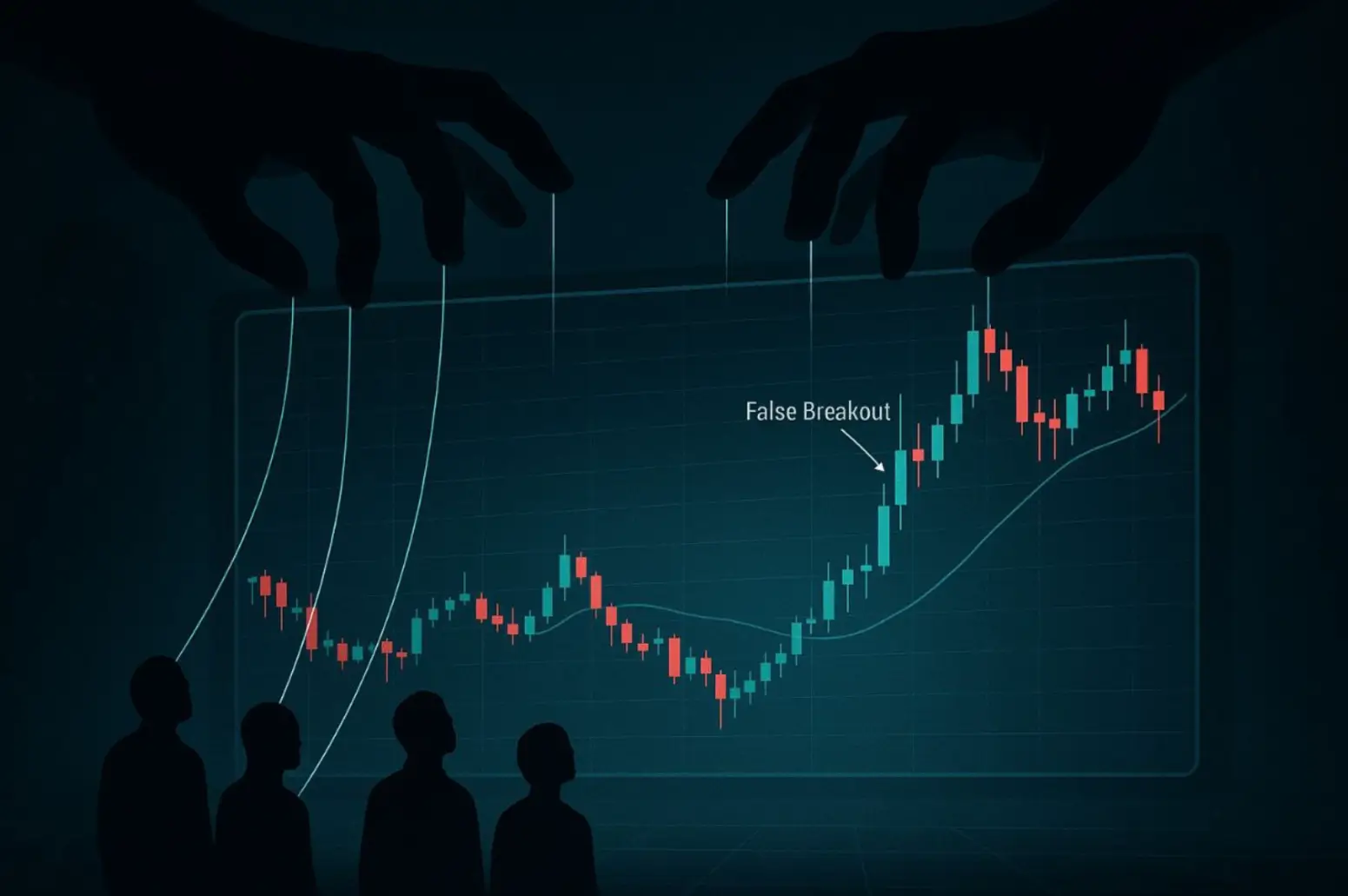Category List


What Is Manipulation in Crypto Trading? 5 Advanced Smart Money Traps to Avoid
In crypto’s wild markets, where 20% swings and whale-driven pumps are routine, manipulation is a cunning tactic used by smart money—exchanges, whales, and algorithmic traders—to trap retail traders. These setups lure you into trades that seem perfect, only to reverse and profit from your losses. Understanding manipulation is key to trading like a pro, not a pawn.
This guide explains manipulation, unveils five advanced smart money traps in crypto, and shows how to avoid them using different tools and data. Whether you’re trading Bitcoin or DeFi tokens, these strategies will help you outsmart the traps.

1. What Is Manipulation in Crypto Trading?
Manipulation is a deliberate price move by smart money to trick retail traders into bad positions, exploiting their FOMO or predictable behavior. It’s the bait before the real move—designed to provide liquidity for large players.
Crypto’s volatility and thin liquidity amplify manipulations, especially in altcoins and DEXs.
2. Advanced Manipulation Traps in Crypto
Smart money uses sophisticated tactics to trap retail traders. Here are five advanced traps and how to spot them:
1. Spoofing-Driven Fake Breakouts
Trap: Whales place large fake orders in the order book to mimic a breakout, triggering retail buys, then cancel orders and reverse price.
Crypto Context: Common in Bitcoin futures or low-liquidity altcoins (e.g., 2024 memecoin pumps).
How to Spot:
- Sudden Volume spikes with no OBV follow-through.
- Fast reversals post-breakout (e.g., bearish engulfing candles).
- On-Chain Data: No whale inflows supporting the move.
How to Avoid: Wait for a retest on higher timeframes (4H/1D). Use VWAP (breakout above VWAP = stronger).
2. DEX Pool Liquidity Sweeps
Trap: In DEXs (e.g., Uniswap), whales manipulate low-liquidity pools to fake pumps, luring buys before draining liquidity.
Crypto Context: Prevalent in DeFi tokens with $100K-$500K pools.
How to Spot:
- Sharp price spikes with low Volume.
- Pool size on DeFi Llama shows thin liquidity.
- Ichimoku Cloud: Price far above cloud (overextended).
How to Avoid: Trade DEX pairs with $1M+ liquidity. Use ATR for dynamic stops.
3. News-Driven False Spikes
Trap: Smart money exploits news (e.g., ETF approvals) to spike prices, luring FOMO buys, then dumps as retail rushes in.
Crypto Context: Common in Bitcoin (e.g., 2024 ETF rumors) or memecoins.
How to Spot:
- Rapid pumps with high Volume but flat OBV.
- Sentiment spikes without on-chain support.
- Fibonacci: Price hits 161.8% extension (overbought).
How to Avoid: Wait 15-30 minutes post-news. Confirm with Ichimoku Cloud and Volume.
4. Algorithmic Stop Hunts
Trap: Algorithms target stop-loss clusters above highs/below lows, triggering liquidations before reversing.
Crypto Context: Prevalent in leveraged markets (e.g., Binance futures).
How to Spot:
- Sharp spikes into liquidity zones with Volume surges.
- On-Chain Data: Whale inflows pre-spike.
- ATR: Spikes exceed 2 x ATR (unusual volatility).
How to Avoid: Place stops beyond obvious zones (e.g., 2x ATR). Use Altrady’s TradingView Pro charts for reversal signals.
5. Over-Optimized Chart Patterns
Trap: Smart money creates “perfect” patterns (e.g., head and shoulders, trendlines) that retail traders chase, only to reverse after luring entries.
Crypto Context: Common in altcoins with low liquidity (e.g., Polygon).
How to Spot:
- Patterns align too cleanly with retail-drawn levels.
- Low Volume during setup formation.
- Ichimoku Cloud: No trend support for the pattern.
How to Avoid: Question “obvious” setups. Confirm with OBV and on-chain whale activity.
Advanced Avoidance Strategy: Beating Smart Money Traps
Outsmart manipulation with this crypto-specific approach:
- Screen for Traps: On 4H/1D charts, mark liquidity zones (highs/lows, Fibonacci 161.8%). Example: Bitcoin’s $60,000 resistance.
- Detect manipulations: Look for spikes into zones with low Volume, flat OBV, or no on-chain whale support.
- Confirm Real Moves: Use VWAP (trade near fair price), Ichimoku Cloud (trend direction), and ATR (dynamic stops).
- Test Safely: Practice in Altrady’s paper trading with Volume and on-chain alerts. Set stops at 1x ATR.
- Execute and Review: Trade live with 1% risk, targeting 2:1 R:R. Journal trades to spot recurring traps.
Risks and Limitations
Manipulation avoidance has pitfalls:
- False Negatives: Over-caution misses valid breakouts (e.g., Bitcoin Breakout Miss, April 2025).
- Tool Lags: OBV or Ichimoku lag in flash crashes; on-chain data misleads in pumps.
- Manipulation: Whales hide intent, bypassing on-chain signals.
- Overanalysis: Too many confirmations delay entries.
- Crypto Risks: Flash crashes, low-liquidity altcoins, and exchange glitches can mask manipulations. Use strict risk management (1-2% per trade).
Mitigation: Test in paper trading, use multiple confirmations (OBV, Ichimoku), and monitor on-chain/sentiment data.
FAQ
Q: Can manipulation occur in altcoins?
A: Yes, especially low-liquidity ones. Use OBV and on-chain data to filter traps.
Q: How do I trade post-manipulation moves?
A: Wait for reversals with Volume and Ichimoku confirmation. Enter at Fibonacci pullbacks.
Q: Can bots detect manipulations?
A: Partially. Program bots with VWAP and Volume rules, but manual oversight is key.
Q: How do I spot DEX manipulations?
A: Check pool size (DeFi Llama) and Volume. Avoid $500K or smaller pools.
Final Thoughts
Manipulation is a smart money weapon, exploiting retail FOMO and predictability in crypto’s volatile markets. By mastering traps like spoofing, DEX sweeps, and news spikes, you can turn the tables and trade like the pros. Tools like VWAP, OBV, and on-chain data, paired with discipline, are your edge.
Start small, journal traps, and practice on platforms like Altrady to spot manipulations risk-free. Trading crypto isn’t about chasing setups—it’s about outsmarting the market’s sneakiest players.
Disclaimer: This article is for educational purposes only and does not constitute financial advice. Cryptocurrency trading is highly volatile and risky. Always do your own research and consult a financial advisor before making any financial decisions.
























